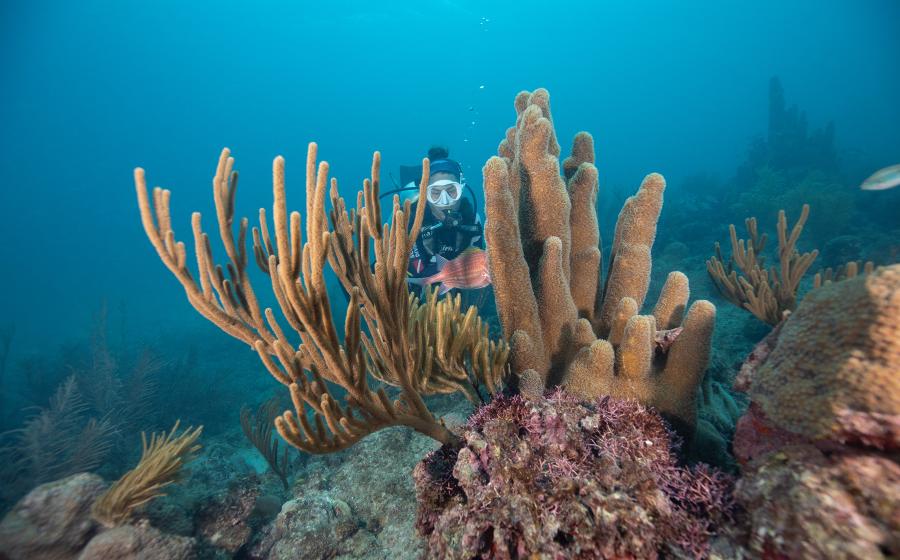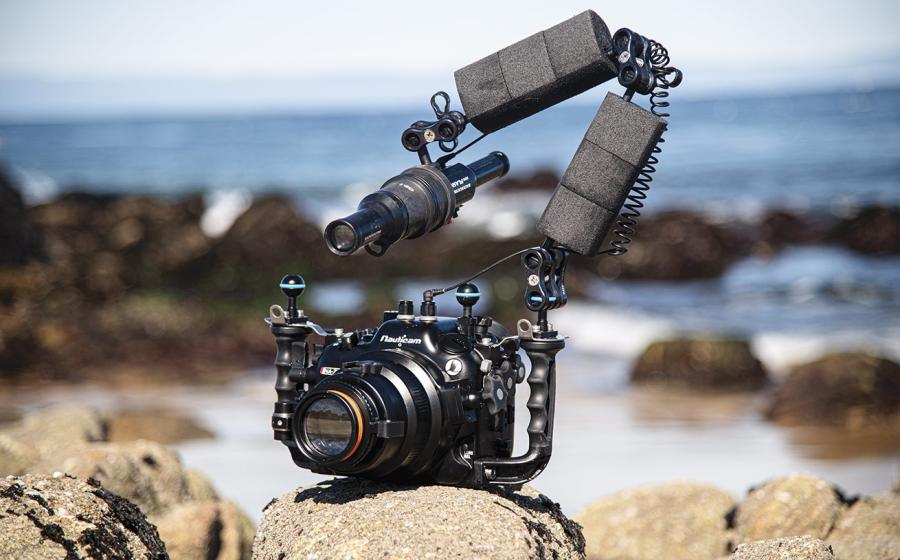Six Unexpected Dive Adventures Around the World
These atypical offers are a diver's chance to give back to the community and experience overlooked locations across the globe.
1. Lissenung Island Resort
This Papua New Guinea resort provides accommodation sponsorships to divers in exchange for doing research on its 300-foot-wide home island, a short boat ride from the capital of New Ireland Province.
The sponsorship covers a semi-ensuite twin room, including meals, mosquito nets and linens, and covers the fees for each dive made on reefs in the area. Candidates from all marine studies are invited to submit a proposal to the resort and must apply for a PNG research permit and visa. They are also asked to provide the local community with access to reports or published studies that come from the stay.
Lissenung has hosted hundreds of divers over the years, according to resort co-manager Ange Amon, including individuals and institutions like New Zealand’s Toi Ohomai Institute of Technology. Hannah Wafer, a researcher from Toi Ohomai studying sea turtles, will return this year to continue her focus on Hawksbill turtles, stars of the resort’s nursery. Four to six critically endangered Hawksbill hatchlings live in the nursery at any time and stay for about a year until they are large enough to survive in the wild. The resort invites locals to participate in hatchling releases and preserving new turtle nests.
The spirit of the initiative allows divers to “enjoy the beautiful remoteness of the resort while contributing to both the local and global environmental education efforts,” Ange says
2. Aotearoa Lakes
New Zealand freshwater scientist Ebi Hussain co-leads Aotearoa Lakes, a national conservation organization that has discovered freshwater mussel species and new sediment layers that play a significant role in lake ecosystems.

Ebrahim HussainDivers take sediment cores to conduct research on internal nutrient loading dynamics.
“A lot of our lake species can only be found in a few lakes and nowhere else in the world, which makes N.Z. lake diving a truly unique experience,” Hussain says. “Hopefully one day people will be as aware of what's in our lakes as they are about what's in our oceans.”
Although volcanic islands and Milford Sound are often the focus of diving in this part of the world, New Zealand’s lake diving is surprisingly dynamic: necessary line work and the low visibility challenges even the most experienced of divers. Aotearoa Lakes projects appeal to scientific, technical, and cave divers who leap at the chance to improve their in-water competency under survey conditions with less than 6 inches of visibility.
Volunteers are always welcome to get in touch online or via email about participating in projects, which include conducting aquatic surveys, wildlife and habitat monitoring, and sediment analysis. Ebi also encourages non-divers to get involved by doing surface surveys on a kayak or analyzing data. All of the research components contribute to broader plans with local officials to improve the health of the lakes.
Ebi’s passion for conservation is evident on the group’s social media, where he encourages the dive community to get involved in the important work of preserving delicate natural environments.
3. SCUBAnauts International
Divers in Florida and Georgia connect with their community through SCUBAnauts International, a nonprofit bringing underwater education to teens. Dive professionals, boat captains, educators and scientists in the United States can volunteer to work with over 60 students aged 12 to 18 during more than 1,000 annual dives.
“When we take them diving, when we show them how to use diving as a tool to make their world better, they just can't get enough,” says Chief Operating Officer and Dive Safety Officer Katie Cooper
Each summer, young people choose from a list of projects that feature 3 to 4 dives per day, learning skills like teamwork and communication.
“Every dive has a purpose—this isn’t just a recreational dive club,” Cooper says. “Our activities range from single day dives conducting fish and benthic counts or cleaning up debris from local reefs and piers, all the way to weeklong missions supporting coral restoration in the Florida Keys and Honduras or training in Reef Check protocols in California.”
4. Mohéli Laka Lodge
Comoros, an Indian Ocean island nation between Madagascar and Mozambique, beckons divers in search of untouched underwater splendor. Mohéli Laka Lodge Diving, the only dive shop on the Comoros island of Mohéli, is located within a sprawling national park. Most of the area is still off the grid, according to the lodge’s general manager Hans De Facq, and the limited infrastructure offers visitors a refreshing break from the hustle and bustle of the world.

Courtesy ImageThe unexplored reefs near Laka Lodge beckon divers to the island’s quiet shores.
Guests can take up to three dives per day, and Hans looks forward to introducing dive tourism to the UNESCO-recognized biosphere reserve and HOPE SPOT in tandem with sustainable practices. Hans says much of the 100,000-acre national park—which Mission Blue highlights as among the most biodiverse places in the Mozambique Channel— has yet to be explored by divers. Warm tides from the Indian Ocean support a unique underwater habitat, including bleach-resilient reefs, which locals have taken great strides to preserve.
Laka Lodge encourages visitors to preserve the beauty of the waters by donating to the village association, which is responsible for removing litter washed up by those same tides. Responsible tourism can help ensure a future of humpback whale migration routes, access to uninhabited islands, and a vibrant reef ecosystem beneath the waves.
5. Tropicalsub Diving
Jacques Cousteau extolled the reserve named after him—La Réserve Cousteau—as one of the world’s most beautiful dive spots. Situated off the west coast of Guadeloupe, the waters of this French overseas archipelago still draws divers from around the world with rare marine life like frogfish and seahorses and an underwater statue of the father of scuba himself!

Tropicalsub DivingNudibranchs cluster together in La Réserve Cousteau.
Today, divers looking to immerse themselves in Cousteau’s muse without crowds should look just north of the reserve to Tropicalsub Diving, a shop in the small town of Deshaies. Owners Eric and Maggy Chevallier lead intentionally small groups of divers on two-tank dives every morning to optimize the chance of seeing something incredible.
“The most surprising thing when we started running our shop was to see a reef so rich in sponges with lots of tropical fish, all in shallow and safe dives,” the pair explained via email. The Chevalliers do not put a time limit on their dive trips—as long as there’s enough air in the tank, there are more sea creatures to see.
6. Spa Village Resort Tembok Bali
A relaxing stay at the centrally-located Spa Village Resort Tembok Bali gives guests their pick of where to dive in Bali. Divers choose whether to orbit Menjangan National Park’s nearly 100-foot sea wall, or explore closer dive sites like the Liberty shipwreck or fauna-filled Amed. But easy luxury doesn’t stop there: guests can luxuriate in a daily 50-minute spa treatment as part of the resort’s extensive list of all-inclusive offerings, perfect especially for divers who’ve returned from a day gawking at gorgeous gorgonian fans.
Are you ready to step up, help save the ocean, and #LiveUnfiltered at the same time? Sign up for a PADI Open Water Diver course now.










